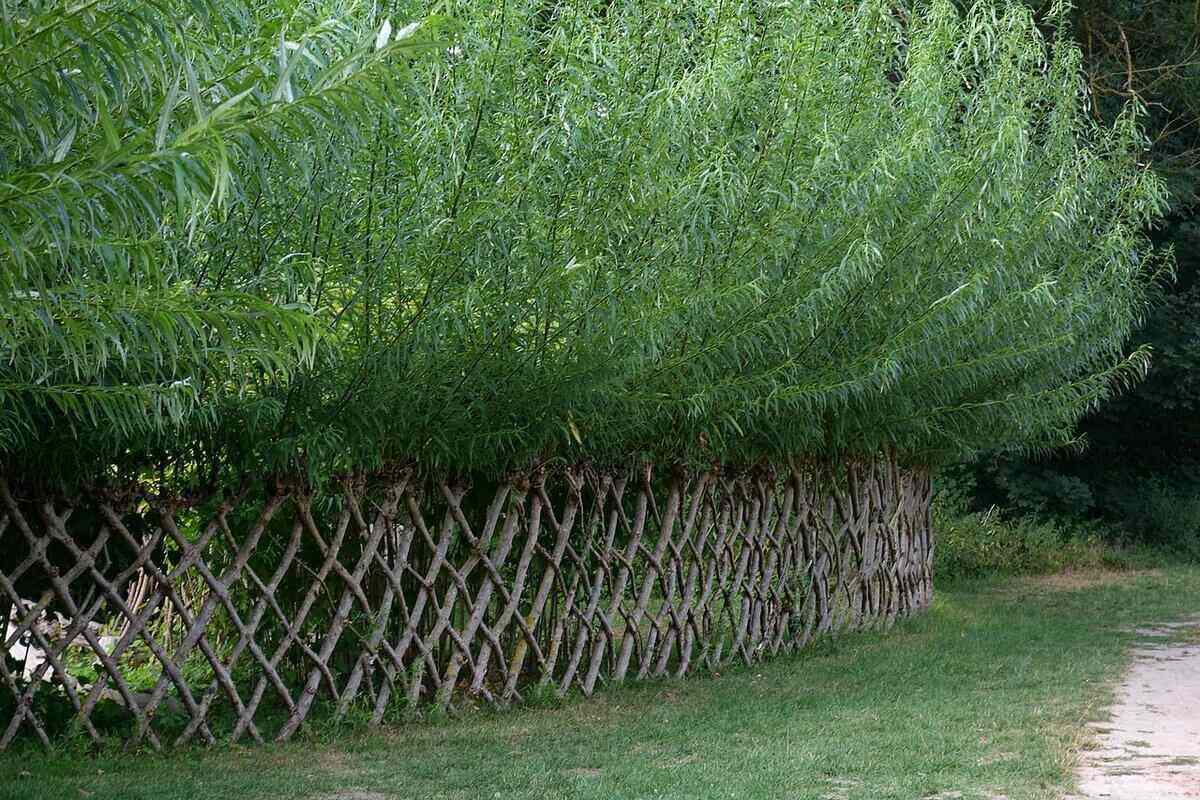Living Fence Construction: Choosing Plants & Techniques

Table of Contents
Plant Selection for Your Living Fence
Choosing the right plants is the cornerstone of a successful living fence. The longevity and aesthetic appeal of your hedge depend heavily on this initial decision. Consider several key factors to ensure your living fence thrives.
Choosing the Right Species
The ideal plant species for your living fence depends on several factors: your local climate, soil type, desired height and density, maintenance needs, and, of course, your aesthetic preferences. A variety of options exist, each with unique characteristics.
-
Evergreen options: These provide year-round screening and privacy, a significant advantage over deciduous varieties. Popular choices include Holly, Privet, and Leyland Cypress. Leyland Cypress, in particular, is known for its fast growth, making it ideal for quickly establishing a privacy screen. However, be mindful of its potential size; regular pruning is crucial.
-
Deciduous options: Deciduous plants offer seasonal interest with changing leaf colors throughout the year. Hawthorn, Beech, and Spirea are excellent examples. They provide beautiful blossoms in spring and vibrant autumn foliage before shedding their leaves for winter.
-
Fast-growing options: If you need a quick screen, fast-growing species like Willow, Bamboo (though consider its invasive potential), and Poplar can be effective. However, fast growth often translates to higher maintenance requirements, including more frequent pruning.
-
Slow-growing options: For those seeking a low-maintenance living fence, slow-growing plants like Boxwood and Yew are excellent choices. They require less frequent pruning but can take longer to reach their desired height and density.
-
Thorny options: For enhanced security, consider thorny plants such as Hawthorn and Blackthorn. These create a natural barrier that's difficult to penetrate, adding an extra layer of protection to your property.
Considering Local Climate and Soil
Matching plant species to your specific growing conditions is critical. Understanding your local climate and soil type will significantly influence the success of your living fence.
-
Research plants native to your region: Native plants are best adapted to your local climate and soil conditions, requiring less maintenance and generally exhibiting greater resilience to pests and diseases.
-
Perform a soil test: Before planting, conduct a soil test to determine its pH and nutrient levels. This will help you amend the soil if necessary, improving drainage and fertility.
-
Amend poor soil: If your soil is poorly draining, amend it with compost, peat moss, or other organic matter to improve its structure and water retention. Similarly, amend nutrient-poor soil with fertilizers to provide the necessary nutrients for healthy growth.
Living Fence Construction Techniques
Proper construction techniques are crucial for a healthy and long-lasting living fence. Careful site preparation and correct planting methods will significantly impact your success.
Site Preparation
Thorough site preparation lays the foundation for a thriving living fence.
-
Clear the area: Begin by clearing the area of weeds, rocks, and any other debris. A weed-free area ensures the plants receive the necessary nutrients and water without competition.
-
Mark the fence line: Clearly mark the desired fence line using string or stakes. This will provide a guide during the planting process, ensuring a straight and even hedge.
-
Amend the soil: Once the area is clear, amend the soil along the fence line as needed, based on the results of your soil test.
Planting Your Living Fence
The planting method plays a key role in the success of your living fence.
-
Dig individual holes or trenches: Depending on the size of your plants and the desired spacing, dig individual holes or a continuous trench. Ensure the holes or trenches are deep enough to accommodate the root ball comfortably.
-
Plant at the correct depth: Plant your seedlings or saplings at the correct depth, ensuring the top of the root ball is level with the surrounding ground. Avoid planting too deep, which can lead to root rot.
-
Water thoroughly: After planting, water thoroughly to settle the soil around the roots and help the plants establish themselves.
Ongoing Maintenance of Your Living Fence
Regular maintenance is essential for a healthy and attractive living fence.
-
Regular watering: Provide consistent watering, especially during dry periods, to ensure the plants receive adequate moisture. Mulching around the base of the plants can help retain soil moisture.
-
Pruning: Regular pruning is crucial for maintaining the shape, density, and overall health of your living fence. Pruning should be done at the appropriate time of year for your chosen species.
-
Fertilizing: Fertilize your living fence annually or as needed to promote healthy growth. Choose a fertilizer specifically formulated for shrubs or hedges.
-
Pest and disease control: Monitor your living fence for signs of pests or diseases and take appropriate action to control them.
Different Living Fence Styles & Designs
Explore various aesthetic and functional aspects when designing your living fence.
Formal vs. Informal Hedges
-
Formal hedges: These require precise pruning to maintain a structured, geometric shape. They offer a clean, polished look and are perfect for formal gardens.
-
Informal hedges: Informal hedges have a more natural, flowing appearance. They require less frequent and less precise pruning, making them a lower-maintenance option.
Single or Multi-Species Hedges
-
Single-species hedges: Using a single species creates a uniform look and simplifies maintenance.
-
Multi-species hedges: Mixing species adds textural and color variety, creating a more dynamic and visually interesting living fence.
Integrating other elements
Combine your living fence with other landscaping features for a more cohesive design. Consider adding trellises for climbing plants or incorporating other shrubs and groundcovers to enhance the overall aesthetic.
Conclusion
Creating a beautiful and functional living fence involves careful plant selection and proper construction techniques. By considering factors like climate, soil conditions, desired height, and maintenance levels, you can choose the perfect plants for your needs. Mastering the techniques of site preparation, planting, and ongoing maintenance ensures a thriving and attractive living fence that adds value and beauty to your property for years to come. Start planning your living fence project today and enjoy the many benefits of this sustainable landscaping solution! Learn more about choosing the right living fence plants and construction methods to create the perfect natural boundary for your home.

Featured Posts
-
 Antisemitism Allegations Rock Queensland Music Awards
May 29, 2025
Antisemitism Allegations Rock Queensland Music Awards
May 29, 2025 -
 New Trump Pardon Attorney Ed Martin A Deep Dive Into His Potential Targets
May 29, 2025
New Trump Pardon Attorney Ed Martin A Deep Dive Into His Potential Targets
May 29, 2025 -
 Pacers Vs Kings Injury Report March 31 Game Preview
May 29, 2025
Pacers Vs Kings Injury Report March 31 Game Preview
May 29, 2025 -
 Air Jordan June 2025 Release Calendar And More
May 29, 2025
Air Jordan June 2025 Release Calendar And More
May 29, 2025 -
 Analisis Real Madrid 1 0 Athletic Club Tres Preguntas Y Respuestas
May 29, 2025
Analisis Real Madrid 1 0 Athletic Club Tres Preguntas Y Respuestas
May 29, 2025
